Perhaps it was just because there were far fewer children’s programmes on when I was a child, and within that, fewer programmes preaching about how to keep yourself safe than there are today, but watching television in the 1970s and 80s was, to me at least, pretty terrifying.
You’d be happily watching your favourite programme, when all of a sudden it would finish and you would be confronted by a woodland animal running out into the road to get his football and then being hit by a car, or somebody flying their kite too close to a power line (that was the one I was most scared of, even though I didn’t have a kite…).
It seemed like there was a never-ending stream of ‘don’t do this,’ ‘never touch that’ and ‘ooh, be careful of those’ messages broadcast; hundreds of public information films were played through the screen at naïve young children, who, presumably up until they saw them had been contemplating climbing inside old abandoned fridges or trying to french kiss rabid dogs. (I’m being a bit flippant; most of these films did have a serious message to impart – albeit in a way that left many small kids mentally scarred for life about things that they were statistically unlikely to be confronted with.)
Of all the types of films broadcast during those decades, there were three that really stood out for me; the aforementioned woodland creatures of the Tufty Club, who were created for the Royal Society for the Prevention of Accidents to give children simple safety messages, the Green Cross Code man (who could forget his fetching green tights?) and Charley Says.
Everybody remembers Charley Says – not just for the message the short films imparted, but also for the song Charly, released by The Prodigy in 1991, which sampled it. It’s also memorable for the fact that controversial DJ and comedian Kenny Everett was actually behind the voice of Charley. He obviously played it in the best possible taste however. Ha.
There were six Charley Says films, made by the Central Office of Information and broadcast in the UK during the 70s and 80s. They dealt with topics ranging from ‘Falling in the water’ (obviously saying ‘don’t,’ not ‘try it’) through ‘don’t play with matches’ and ‘don’t talk to strangers,’ with the slightly less common terror of ‘don’t pull tablecloths off tables’ also making an appearance.
The main characters in Charley Says were Tony, a little boy, and his faithful cat – the eponymous Charley. Tony would tell the story of his latest particular scare whilst we watched it unfold on screen. Charley was a very vocal feline, and at the end of each episode he would miaow his way through the moral of the story, which Tony would translate for the watching audience: e.g. ‘Miaow miaaaow miaooow miaowwwww.’ ‘Charley says…never go anywhere with men or ladies you don’t know.’ If Tony and Charley had made the right decision during the scenario then they would be rewarded; a treat for Tony and a fish for Charley, which Charley would devour quickly, leaving only the familiar cartoon fishbone.
They were made with a particularly clunky visual style, familiar to many because the animation was created by Richard Taylor Cartoons, who were also responsible for the television series Crystal Tipps and Alistair. Charley Says was voted number one in a poll of ‘Favourite Public Information Films’ (yes, really) for the BBC News website’s Magazine pages and you can actually buy Charley Says on DVD (alongside many other ‘aaaargh, the world is such a scary place’ public information films).
‘Miaooow miaaaaow miaowwwwwww miaaaaw.’ ‘Charley says ‘I’d like to do something that doesn’t put our lives in peril today please.’


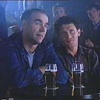
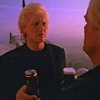

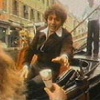
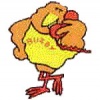


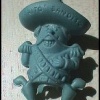


Do You Remember Charlie Says?
Do You Remember Charlie Says?